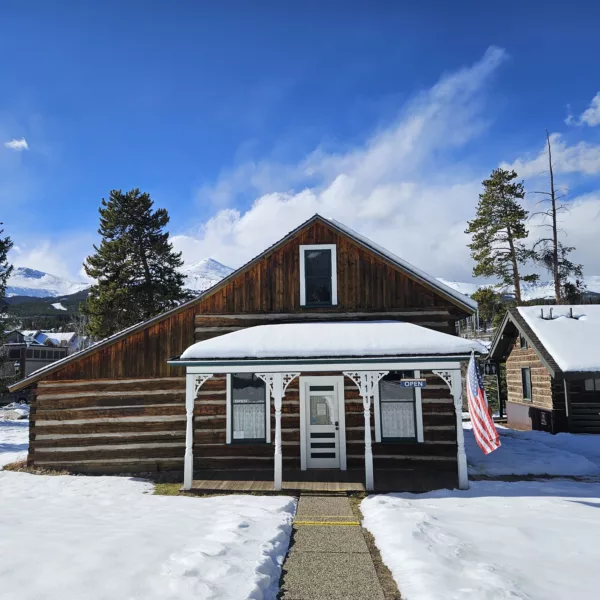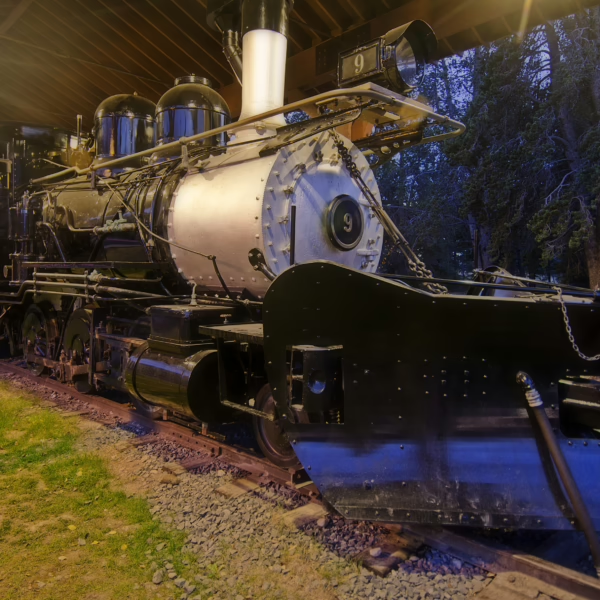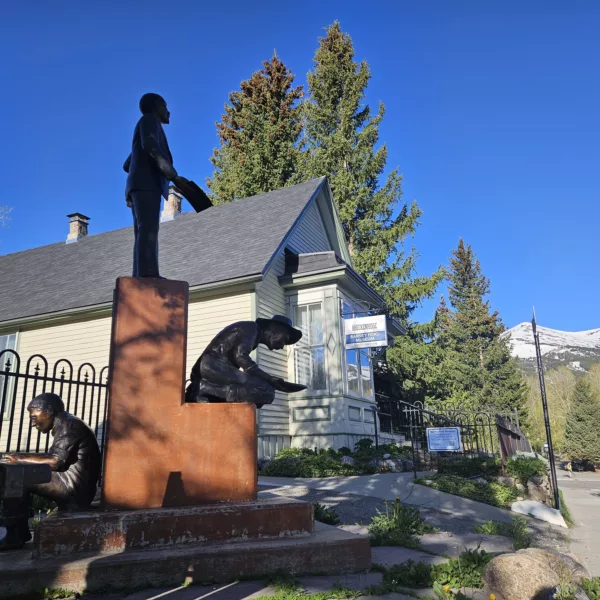Victorian Hair Art and the Macabre Rituals of Death in Early Breckenridge
October 28, 2024 | Category: Our Collective History
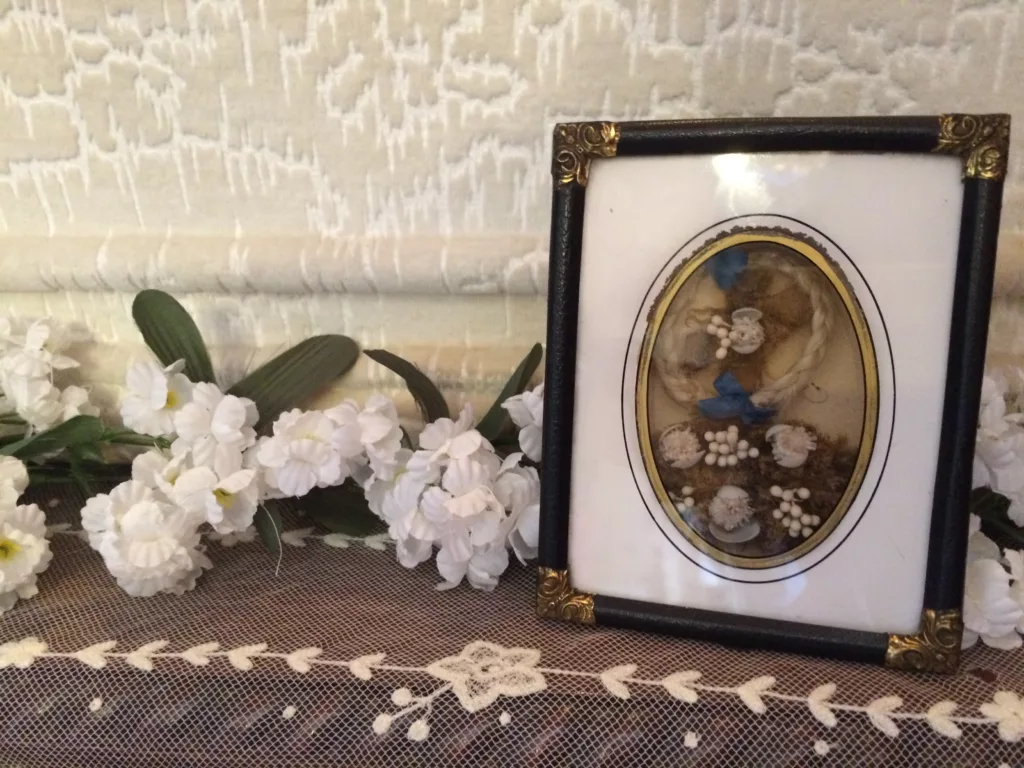
“Hair is at once the most delicate and last of our materials and survives us like love. It is so light, so gentle, so escaping from the idea of death, that, with a lock of hair belonging to a child or friend we may almost look up to heaven and compare notes with angelic nature, may almost say, I have a piece of thee here, not unworthy of thy being now.”
-Gody’s Ladies Book, 1850
Macabre rituals of death and mourning bewitched the early residents of Breckenridge. Just as Victorian architecture was the style in Breckenridge’s mining days, so too were the traditions and practices surrounding death and dying made popular by Queen Victoria upon the death of her beloved Prince Albert.
Queen Victoria (b. 1819 – d. 1901 ) was a tremendous force on culture and popular style around the world in the late 1800s. When her husband, Prince Consort Albert, died in 1861 at the relatively young age of 42, Victoria entered a period of pathologically deep mourning from which she never recovered.
Victoria ushered in a new era of the “cult of the dead,” a fascination with death accompanied by the awareness that death eludes us every day that we live. As a result, the world became enchanted with memento mori, remembrances of the dead. Even today, we are influenced by Victoria’s lead: We still observe funeral etiquette, wear black to memorials, and observe a “wake” upon the death of a loved one.
However, Victoria took her grieving to a new level of performance art. And the people of Breckenridge followed suit. In our own country, the mass casualties of the Civil War further increased interest in memorialization.
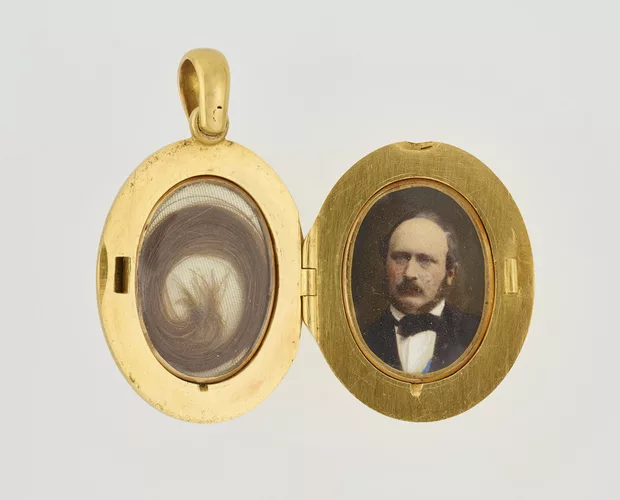
One of the strangest practices, to our era anyway, was the craft of making art from a deceased loved one’s hair. Hair does not decay like the flesh and bones of the dearly departed, making it the perfect vehicle for remembrance.
Hair art was not usually made by professional artists. It was considered a “ladies’ activity.” Neither was hair art always made from the dead. Long hair was de rigueur for Victorian-era women, and they saved their lost strands in a hair receiver for future use. However, saving locks from the departed created some of the most common, and most poignant, hair art.
Hair art is created using a variety of techniques; it can be braided, macramé-d, molded, and wired, or chopped into pieces and pasted down like a painting. Coloring was achieved by using different shades of tresses, with white hair being highly prized. While the Breckenridge collection is comprised of hair art that is mounted in frames affixed to the wall, hair art can take many forms: bracelets, broches, earrings, rings, chains, necklaces, shawl pins, purses, book markers, pencil cases, and even riding whips.
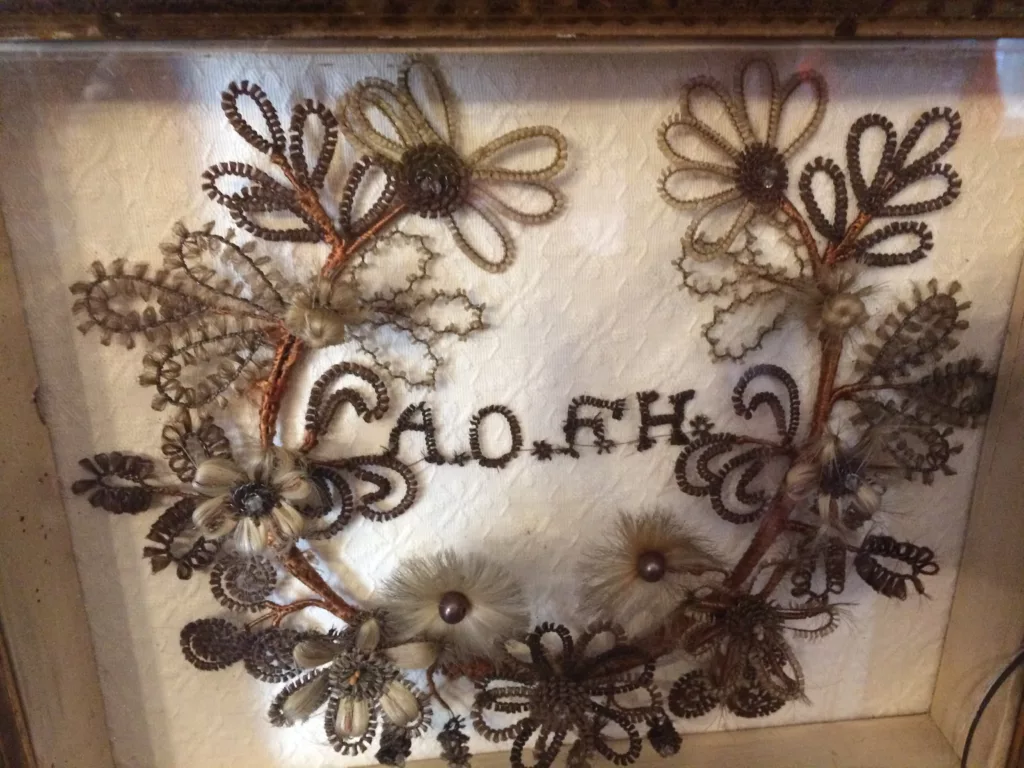 Breckenridge History’s notable collection of Victorian Hair Art includes wreaths, flower arrangements, and miniatures. One piece features initials; we assume they commemorate the deceased.
Breckenridge History’s notable collection of Victorian Hair Art includes wreaths, flower arrangements, and miniatures. One piece features initials; we assume they commemorate the deceased.
You can learn to make your own hair art in this article and from this reproduced book from 1867. Thankfully the instructions include directions on how to wash and dry the hair before turning it into art. Most importantly, dry the hair away from fire, for obvious reasons. The largest collection of hair art in the U.S. is found in Independence, Missouri.
Another Victorian-era tradition that actually saved lives was holding a wake. For example, look at the death of young Ada Finding, who passed away twice. Her first brush with death was on Jan. 19, 1888, just after lunch. Thankfully, the family held a wake – a practice intended to ensure that the deceased was truly dead and not just in a coma. Little Ada awoke from her death to the joy of her family. The celebration was short-lived, as Ada passed away again the next morning, this time for real.
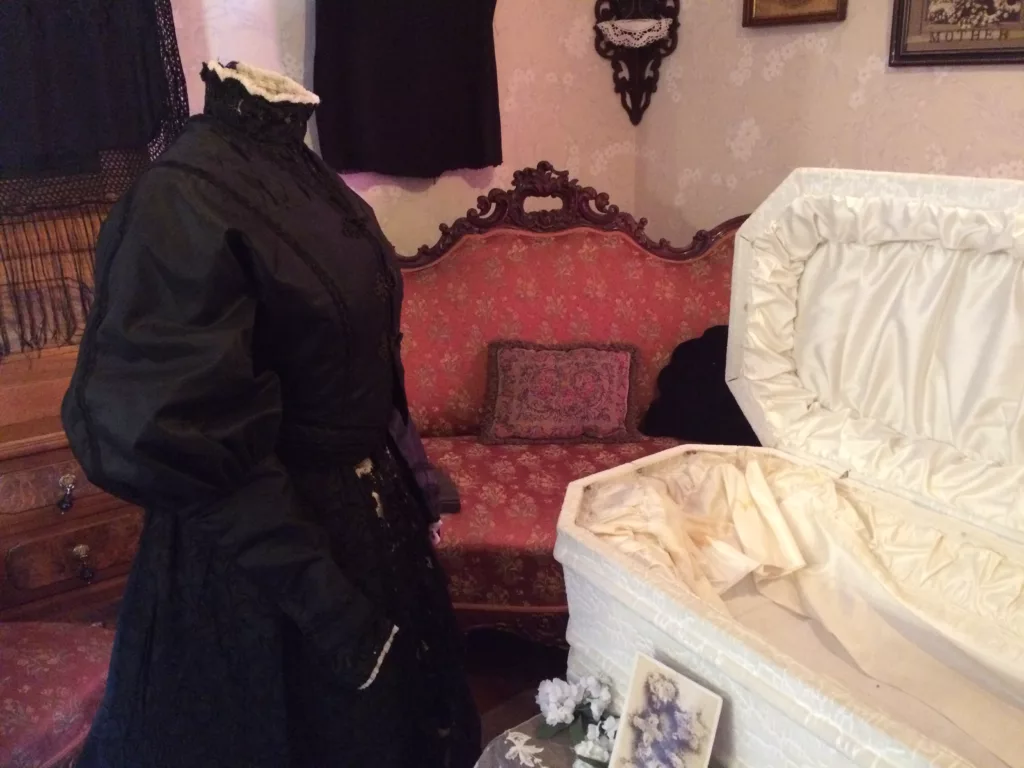 Another notable carry over from the Queen Victoria era is strict etiquette. There was deep mourning and half mourning, rules about what to wear, how to enter a home and what kind of stationery was appropriate.
Another notable carry over from the Queen Victoria era is strict etiquette. There was deep mourning and half mourning, rules about what to wear, how to enter a home and what kind of stationery was appropriate.
Take in Breckenridge History’s Tombstone Tales Tour to learn more about all of these customs.

